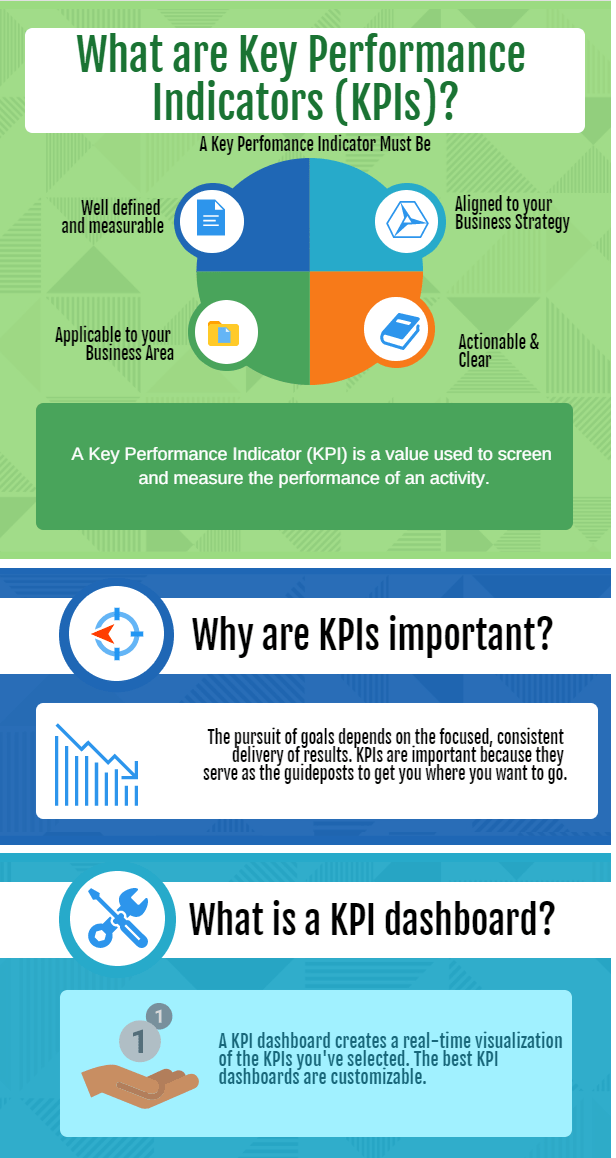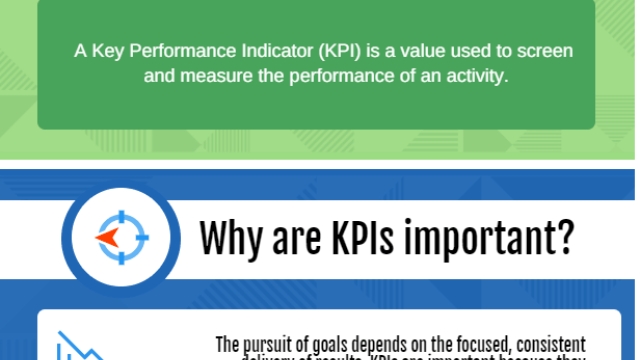
Unlocking Success: The Power of Key Performance Indicators
In today’s competitive business landscape, success is measured not just by the amount of revenue generated, but also by the effectiveness and efficiency with which goals are achieved. This is where Key Performance Indicators (KPIs) come into play. These quantifiable metrics provide valuable insights into the performance and progress of an organization, enabling leaders to make informed decisions and drive improvement.
At their core, KPIs act as compasses, providing direction and focus for businesses across various industries. They serve as benchmarks against which performance can be evaluated, helping to assess whether strategies and initiatives are on track or need adjustment. By identifying the most critical elements and areas for measurement, organizations can align their efforts and resources accordingly, ultimately boosting productivity and elevating overall performance.
The true power of KPIs lies in their ability to provide a clear and objective framework for tracking and evaluating progress. Instead of relying solely on subjective assessments or gut feelings, businesses can leverage data-driven insights to objectively assess their performance. This not only enhances transparency and accountability within the organization but also enables leaders and teams to identify areas of improvement and take proactive steps towards success.
In the following sections, we will explore the various types of KPIs, their importance in different industries, and how organizations can effectively implement and leverage them to unlock success. From financial metrics to customer satisfaction indicators, KPIs offer a comprehensive roadmap for strategic decision-making and continuous improvement. So, join us on this journey as we delve into the world of Key Performance Indicators and discover the transformative effect they can have on businesses striving for success.
Why Key Performance Indicators Matter
Key Performance Indicators (KPIs) play a crucial role in measuring and assessing the success of any endeavor. These metrics offer valuable insights into the performance and progress of a business or project, helping to identify areas of strength and weakness. By providing objective data, KPIs allow organizations to make informed decisions, set realistic goals, and track their performance over time.
One of the primary reasons why KPIs matter is their ability to align business objectives with outcomes. By defining specific indicators that directly relate to desired outcomes, organizations can monitor their progress and ensure strategic alignment. For example, a sales team might use KPIs such as revenue growth, conversion rate, or customer acquisition costs to track their performance and determine the effectiveness of their sales strategies.
Moreover, KPIs facilitate communication and collaboration within an organization. By establishing a common set of metrics, teams can easily share their progress, achievements, and challenges with one another. This fosters transparency, encourages accountability, and promotes a culture of continuous improvement. With KPIs in place, everyone can focus on the same objectives and work together towards shared goals.
Another important aspect of KPIs is their ability to provide actionable insights. By regularly monitoring and analyzing these indicators, organizations can identify trends, patterns, and potential bottlenecks. This allows them to make data-driven decisions, implement targeted improvements, and maximize their chances of success. Whether it’s optimizing marketing campaigns, improving customer satisfaction, or increasing operational efficiency, KPIs serve as valuable guides in the pursuit of excellence.
In conclusion, key performance indicators are not just arbitrary numbers – they are essential tools in understanding and measuring success. With their ability to align objectives, promote collaboration, and offer actionable insights, KPIs empower organizations to make better-informed decisions and drive continuous improvement. By unlocking the power of KPIs, businesses and projects can unlock their full potential and achieve sustainable success.
Types of Key Performance Indicators
When it comes to measuring performance and tracking progress towards goals, Key Performance Indicators (KPIs) play a vital role. They provide valuable insights into various aspects of an organization’s performance. In this section, we will explore three main types of KPIs that are commonly used by businesses.
Outcome Indicators: These KPIs focus on the end result or outcome of a process or activity. They measure the success or failure of a particular goal or objective. For example, in sales, the revenue generated can be considered an outcome indicator. Other outcome indicators could include customer satisfaction levels or market share.
Input Indicators: Unlike outcome indicators, input KPIs measure the resources or inputs utilized in an operation or process. These indicators help assess the efficiency and productivity of various activities. Examples of input indicators include the number of hours worked, the amount of money invested, or the quantity of raw materials used.
Process Indicators: Process KPIs provide insights into how well a particular process or system is performing. They monitor the activities carried out to achieve desired outcomes. For example, the average response time to customer queries can be a process indicator in customer support. Other examples might include the number of defects in a manufacturing process or the turnaround time for order processing.
By carefully selecting and monitoring these different types of KPIs, businesses can gain a comprehensive understanding of their performance. Each type offers valuable insights into different aspects of operations, enabling informed decision-making and continuous improvement.
Implementing and Tracking Key Performance Indicators
Key Performance Indicators
Implementing and tracking Key Performance Indicators (KPIs) is crucial for achieving success in any organization. By setting clear and measurable KPIs, businesses can effectively monitor their progress and make informed decisions to drive performance improvement. In this section, we will explore some key considerations for implementing and tracking KPIs.
First and foremost, it is essential to align your KPIs with your overall business objectives. Identifying the metrics that directly contribute to your organization’s goals will ensure that your KPIs are meaningful and impactful. For example, if your main objective is to increase customer satisfaction, you may consider tracking KPIs such as customer retention rate or Net Promoter Score (NPS).
Once you have identified the relevant KPIs, the next step is to establish specific targets or benchmarks for each metric. These targets will help you gauge your performance and progress over time. It is important to set realistic and attainable targets based on historical data, industry standards, and your organization’s capabilities.
Tracking KPIs should be an ongoing process, with regular monitoring and analysis of the data. Utilizing technology and data analytics tools can greatly facilitate this process, providing real-time insights and visualizations. Regular reviews of the KPIs will allow you to identify trends, patterns, and areas for improvement. Additionally, it is important to communicate the KPI progress and findings to relevant stakeholders, such as team members, managers, or investors.
In summary, implementing and tracking Key Performance Indicators is essential for driving success in organizations. By aligning KPIs with business objectives, setting targets, and regularly monitoring progress, businesses can make data-driven decisions and continuously improve their performance. Consideration of these factors will ultimately unlock the power of Key Performance Indicators and drive success for your organization.




